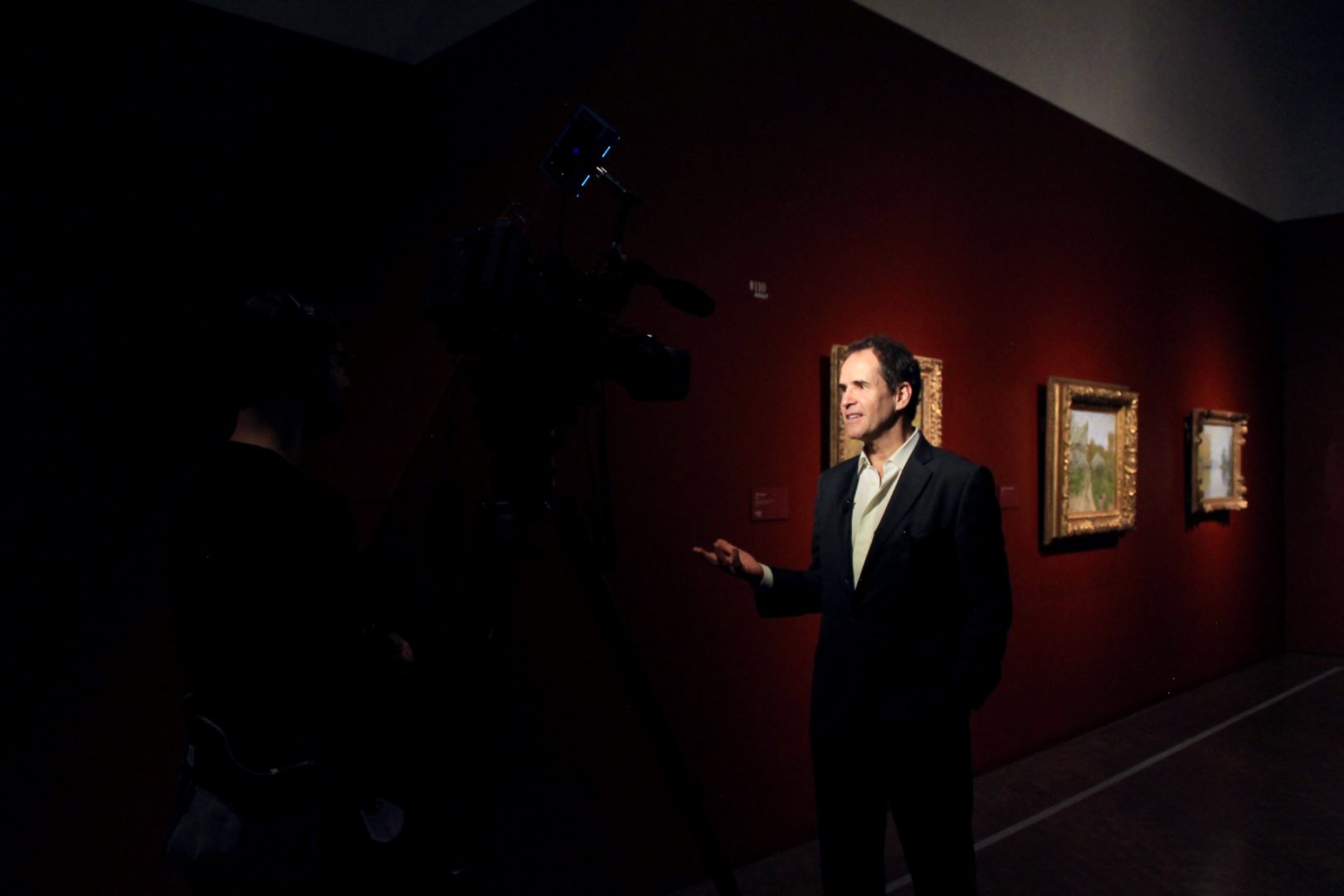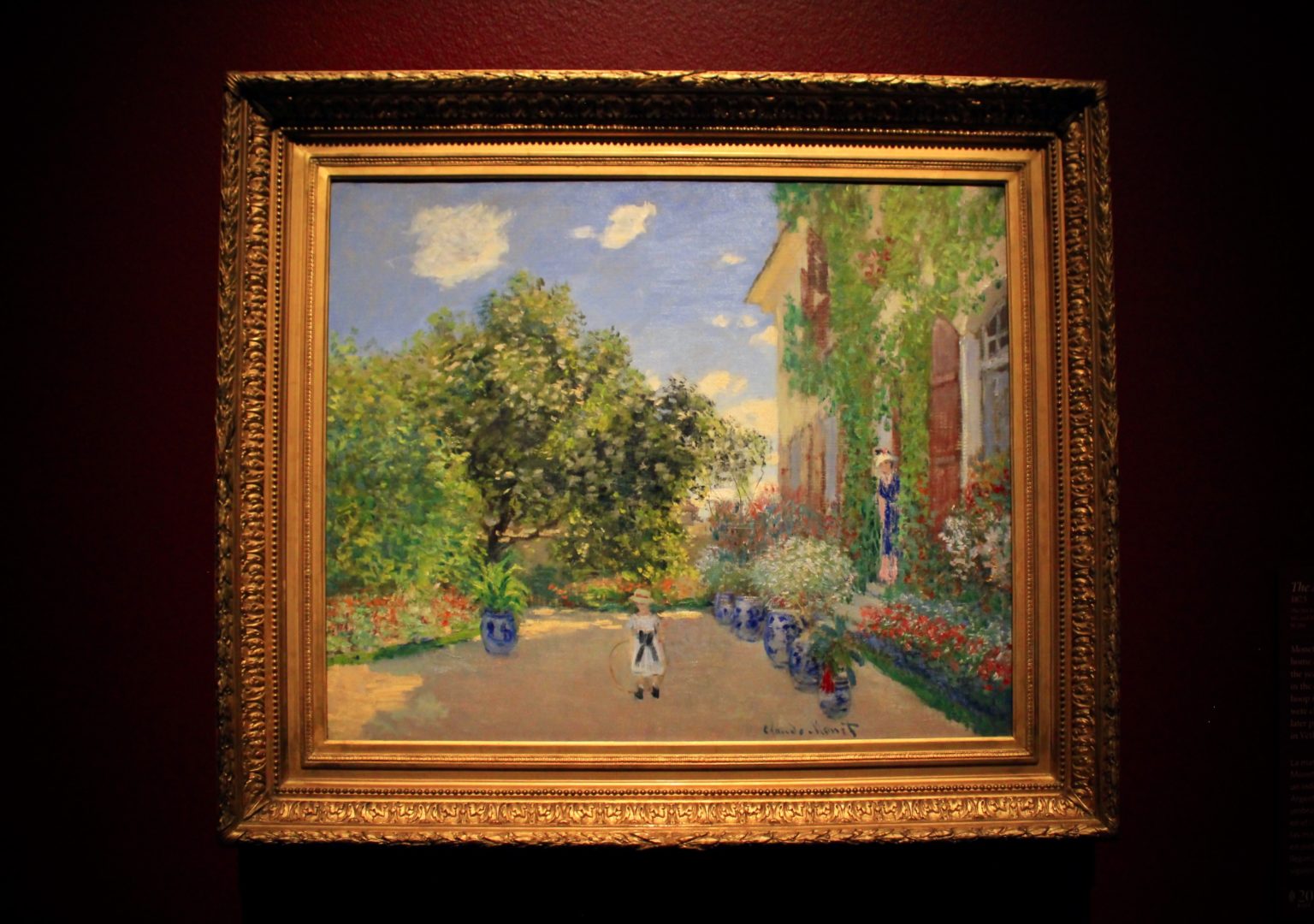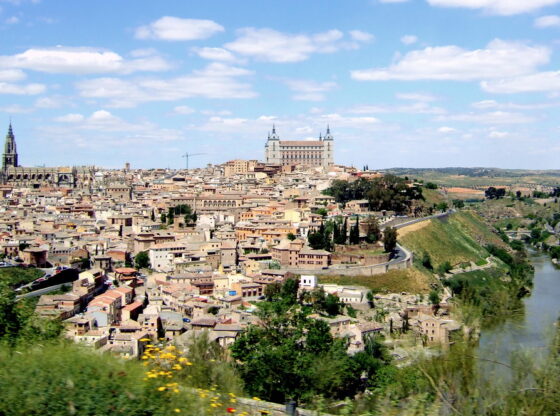125 Monet paintings in one place? In Denver, Colorado? Yes, the rumors are true, and they’re all currently hanging in massive gold frames in downtown’s Denver Art Museum.
For the next three months, the beloved Denver museum will house the most comprehensive US exhibit of painter Claude Monet’s works in over 25 years, entitled “Claude Monet: The Truth of Nature.” Sourced from 80 lenders spanning 15 countries, Denver Art Museum director Christoph Heinrich and chief curator Angelica Daneo co-curated and organized the exhibition over the past three years in collaboration with director Ortrud Westheider of the newly opened Museum Barberini in Postdam, Germany. Westheider and her colleagues will host the exhibit at their facility after its Denver residency.
This new exhibition is not only a row of paintings: It is a multi-sensory experience with impressionism around every corner, oozing through each piece of artwork. Dark, richly colored walls greet museum-goers when they enter the exhibit as the music of Claude Debussy and Maurice Ravel softly tiptoes around the room. Heinrich encourages visitors to make their visits physical by standing merely inches away from the paintings and then slowly walking backwards and seeing an image develop with each step. This activity allows viewers to fully immerse themselves in Monet’s classic style that makes paintings appear blurry close up but fully formed from far away.
The exhibition chronologically arranges Monet’s vibrant career of painting the outdoors and nature, a theme that will certainly captivate Coloradans’ love of the natural world. Spanning two floors of the museum, the second-floor entrance opens at the beginning of his career, including “View From Rouelles,” his first-ever exhibited painting from 1858. As part of Monet’s young work, the museum hosts his early paper caricature sketches as well as works from his mentor, Eugène Boudin. The exhibition closes with several of his famous water-lily paintings from the end of his life.

This chronological progression proves exceedingly effective for viewers to witness Monet’s artistic changes throughout his life. As guests travel from one room to the next, they observe the artist’s transition from a 19th century realist to what Heinrich describes as the “trailblazer of the impressionists.” Each section additionally focuses on where Monet travelled in Europe, whether it be in Paris’ cityscapes, London’s bitter fog, Italy’s coastlines or Giverny’s serene gardens.
“In the early works, he’s more interested in city life and civilization,” said Heinrich. “That goes away in the 1870s, and more and more he’s really looking for the untouched nature. He occasionally puts little figures into a field, but that is more to give the painting some depth or to create some sort of scale…He’s really interested in nature and light and how the appearance of the world around us changes with the light and the atmosphere. Monet was somebody who wanted to paint atmosphere.”

This intent focus on the atmosphere and nature’s changeable qualities is featured in the exhibition’s inclusion of all of Monet’s most beloved natural subjects: haystacks, poplars, coastlines/seascapes, gardens and, of course, water-lilies. Monet devotes multiple canvases to each of the subjects; these enchanting series enable viewers to place themselves into a changing landscape rather than observing it as a static object. His works hold an additional capacity to remind a viewer of an ocean, forest or landscape they know personally, effortlessly voicing the sounds of crashing waves or the silence of snow.
His depictions of nature arrive in Denver at a fitting time in the midst of climate and preservation movements around the world.
“What I would wish kids [and students] to take away [from this exhibit] is this enormous respect that Monet had for nature, and that is expressed in each and every painting,” said Heinrich. “That’s definitely something we could use a little bit more these days.”
No matter where Monet traveled in Europe, his utter devotion to the nature surrounding him makes him resonate so well with audiences here in Colorado and all around the world. Monet views nature as a living, breathing character with opinions, moods and personality.

In one of the painter’s personal letters, he writes, “To really paint the sea, one must look at it from the same spot everyday at different times of day to understand its ways in that place.” This exhibit plays off these sentiments and aims for viewers to carefully explore nearby nature and the ways it exists in Colorado. It hopes viewers who spend time observing the natural world will want to protect and respect it.
This fearless love affair with the outdoors is central to the exhibition and Monet’s existence as a painter. Its title, “The Truth of Nature,” further refers to the painter’s lifelong quest to paint nature in every light and season to capture its most pure essence.
Monet lived his life searching for this truth, and now viewers in Denver can be inspired to do the same.
If you are interested in visiting this once-in-a-lifetime Monet experience, it is best is to go online and book tickets in advance for a specific time ticket and date that you wish to preview the show. Student discounts are also available for museum admittance with a student ID card.













